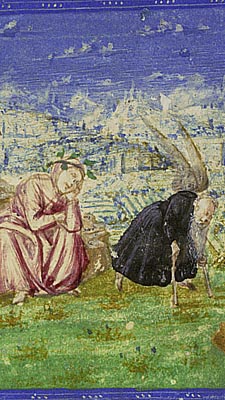
Schoolbooks
![]()
The centrality of sacred Scripture in medieval culture made reading a
vital part of education. To advance understanding of Christian teachings,
the Church organized a system of education that enabled its clerics to
better spread and interpret Christian beliefs. Taking the liberal arts
curriculum of the ancient world as a model, the Church used secular texts
to educate its intelligentsia.
Until the twelfth century, monasteries played the primary role in copying and preserving non-religious texts. From the twelfth century onwards, non-monastic cathedral schools became the leading institutions for education. By the 13th century, some cathedral schools had developed into universities, creating a new educational model known as "scholasticism." The scholastic university system lasted into the early modern period. During the Renaissance, however, Italian humanists called its methods into question, reacting against the universities as overly parochial and restrictive in their outlook and aims.

Copyright
© 2002 Division of Rare & Manuscript
Collections
2B Carl A. Kroch Library, Cornell University, Ithaca, NY, 14853
Phone Number: (607) 255-3530. Fax Number: (607) 255-9524
For
reference questions, send mail to:
rareref@cornell.edu
If you have questions or comments about the site, send mail to: webmaster.